Japanese Model 89 Knee Mortar
October 17th, 2023
8 minute read
For more than a century, American troops have given a wide variety of nicknames to their own weapons, and also those of their enemies. During World War II, American troops in the Pacific Theatre created a nickname for a highly effective Japanese weapon that was a bit misleading.
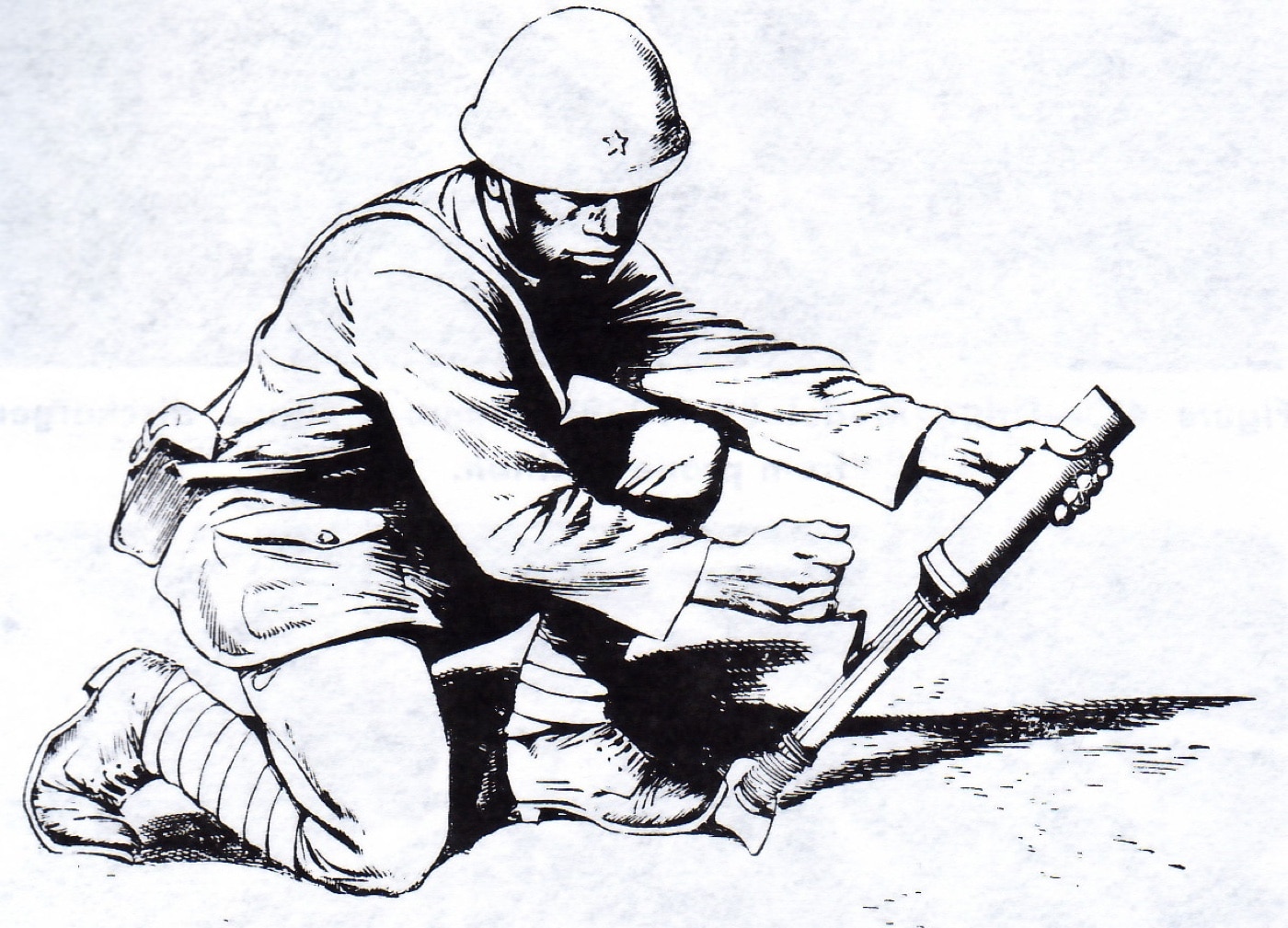
The G.I. and Marine moniker “Knee Mortar” was used to describe the Japanese Model 89 50mm Grenade Discharger, and Colonel Edson, the famous commander of the USMC Raiders in the Solomon Islands, summed up the errant nickname like this: “The name ‘Knee mortar’ is a misnomer. It is not fired from the knee. One of my men tried this and broke his leg.”
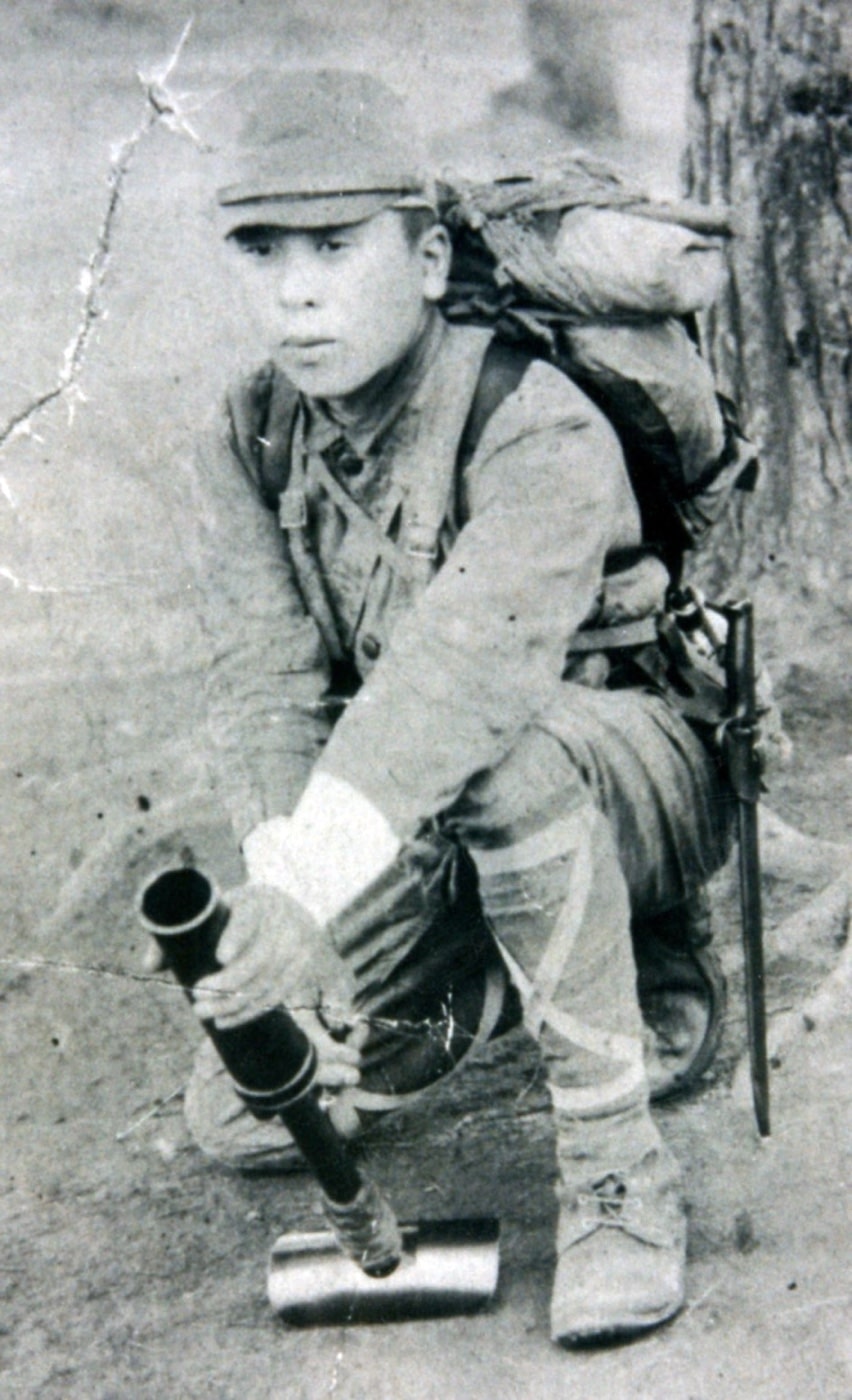
As for the Japanese, they called it “Juteki”, and it was officially was designated “Hachikyu Shiki”. Whatever it was called, the Type 89 was deadly, particularly in jungle warfare.
Model 89
The Japanese had identified an important gap in the range of hand grenades and mortars. The Model 89 grenade discharger specifically addressed this gap and effectively dominated that space with a 1-lb., 12-oz. high explosive (HE) shell that provided a considerable blast effect. The standard Model 91 fragmentation grenade could also be fired when fitted with a propellant cylinder.
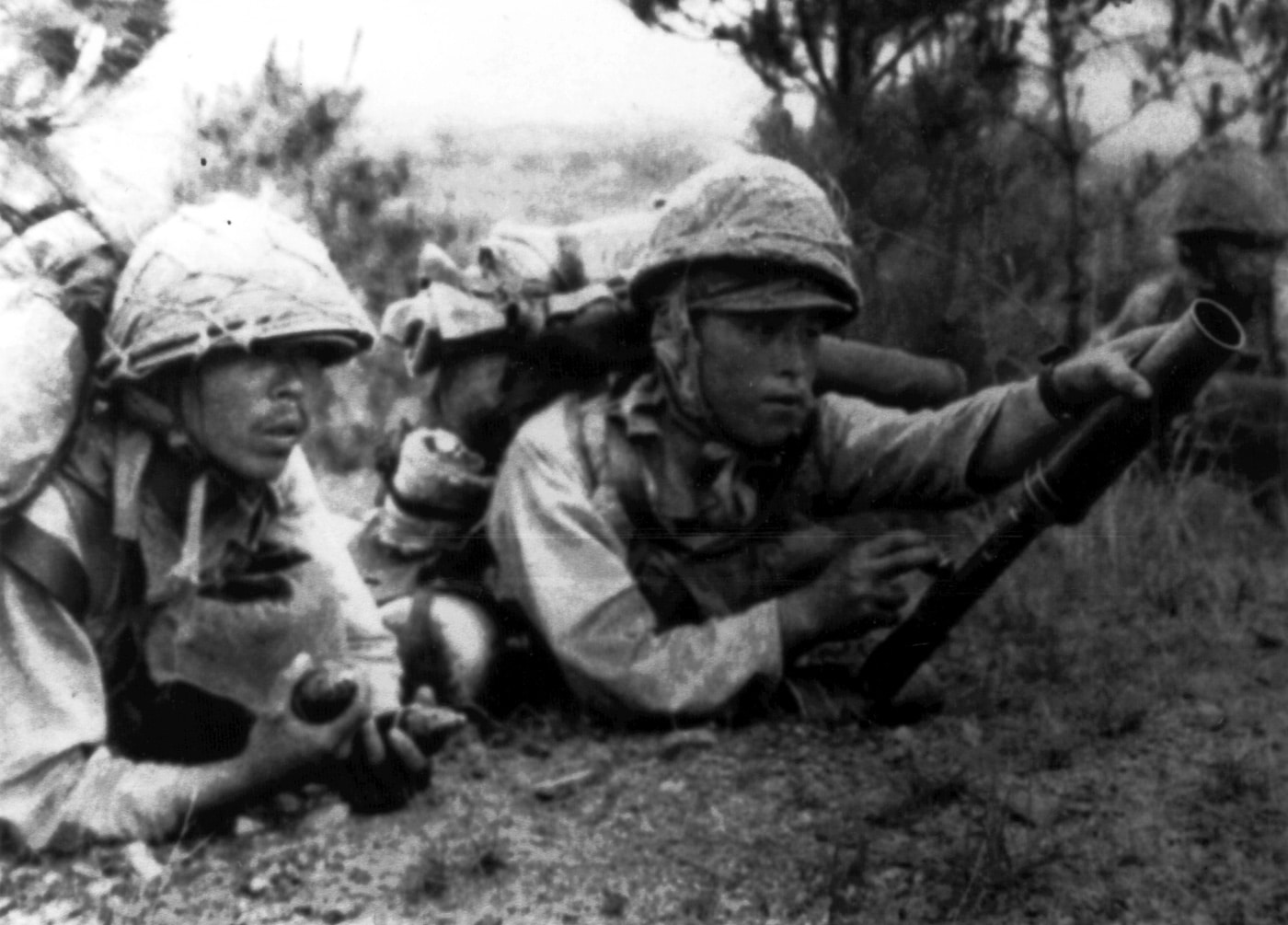
Encountered in all the major battles of the Pacific War, the Model 89 (1929) 50mm Grenade Discharger was a simple, easily portable, and highly effective weapon. It was carried as a complete unit in a cloth and leather case with a shoulder sling, ready to be brought quickly into action.
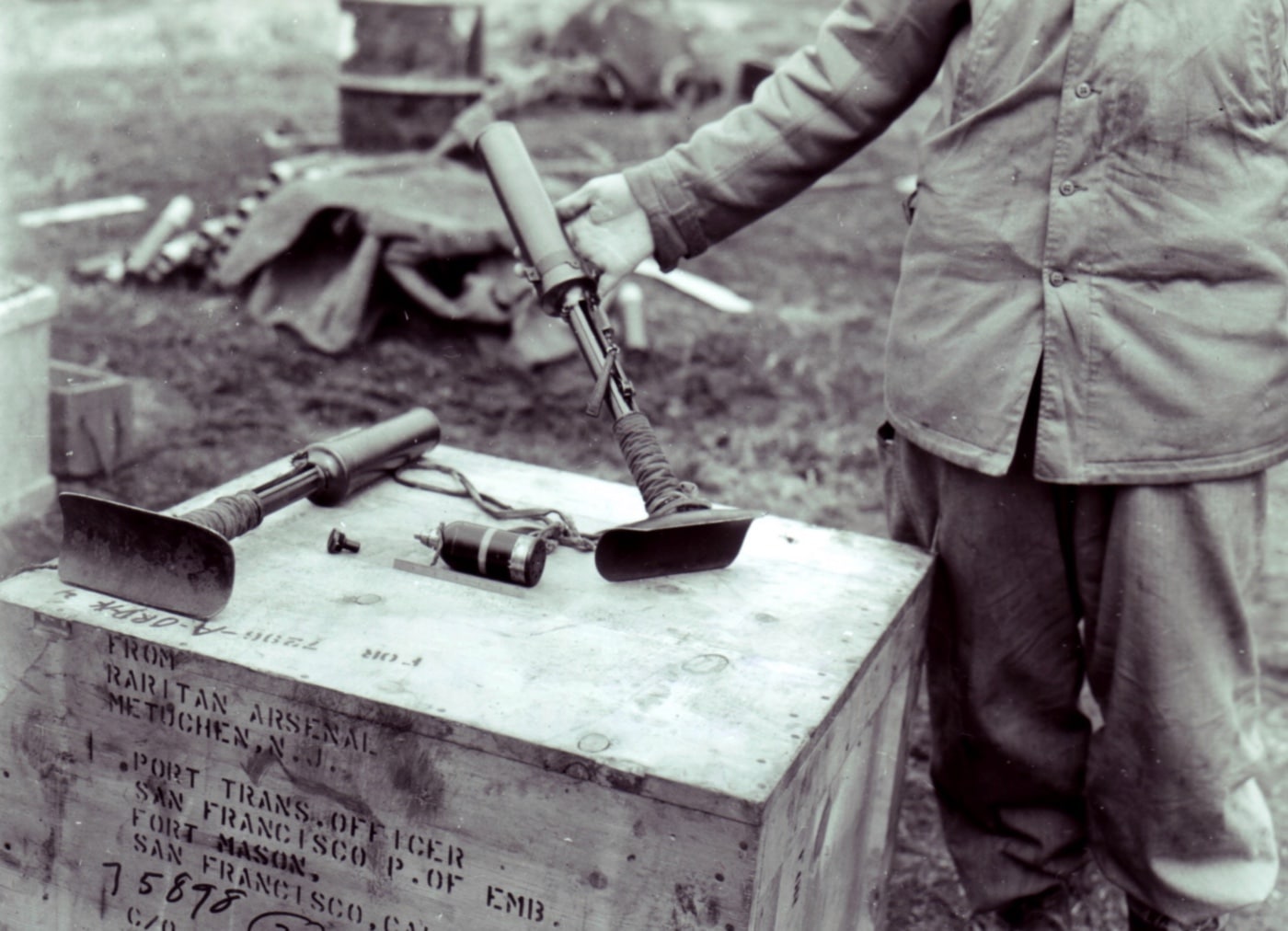
Gunners normally carried at least eight high explosive rounds in cloth pouches on their waist belt, the weight of the ammunition supported by web suspenders. Three or four Model 89s were provided to the heavy weapons squad of each Japanese rifle platoon, and at least two ammunition carriers were assigned to support each grenade discharger.
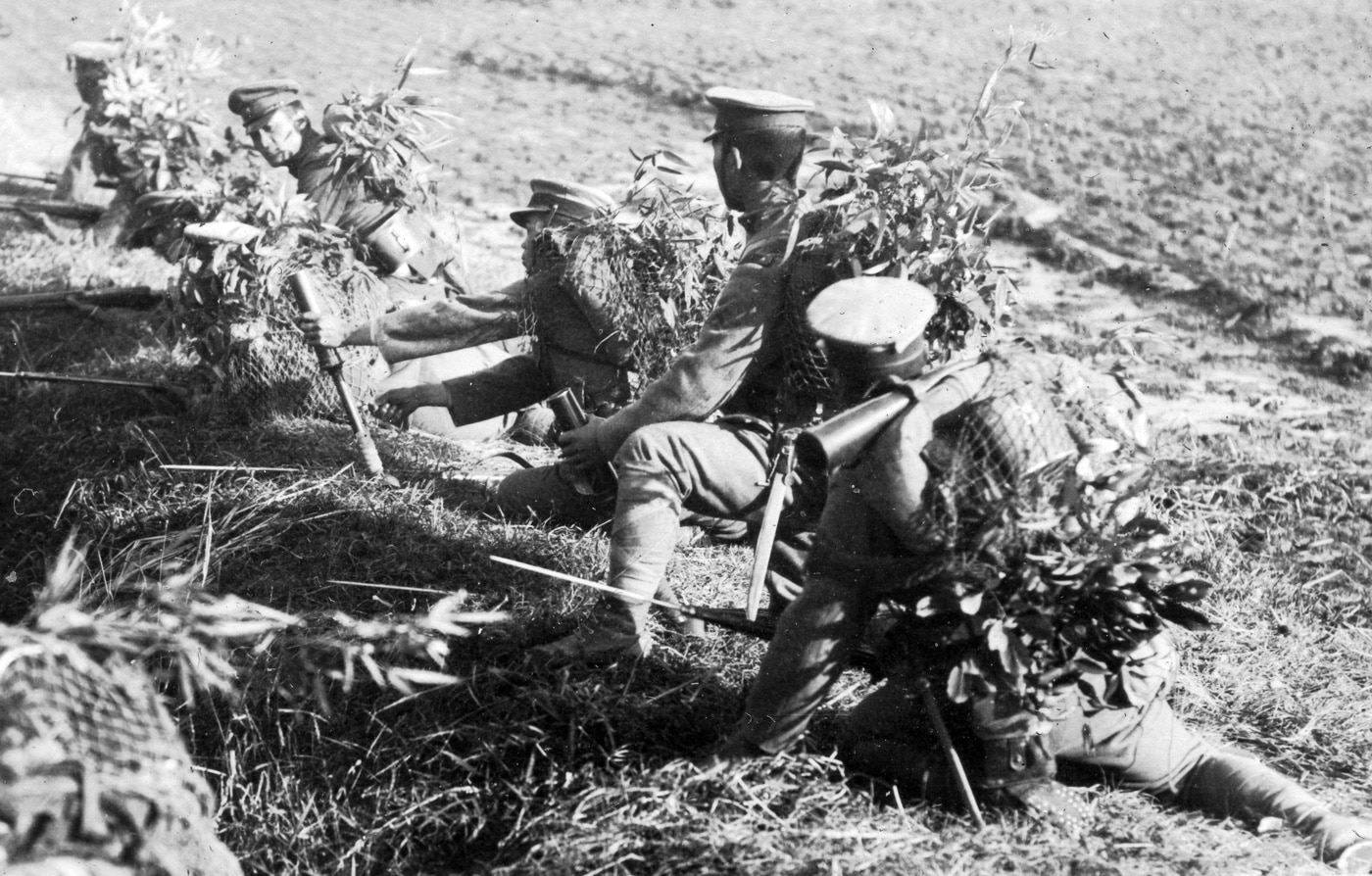
Even though the barrel of the Model 89 was short, the weapon was accurate because its bore was rifled and its HE shell was spin-stabilized in flight. While most mortars of the era used smooth tubes with fin-stabilized ammunition, the Type 89’s projectile engaged the rifling via a copper band at the base of the shell. The rifled bore was the prime reason for the heavy recoil of the grenade discharger — recoil strong enough to crush the leg bone of a user foolish enough to place the curved (concave) base plate on his leg. The “knee mortar” nickname may have come from the fact that the weapon was often used from the kneeling position, with the base plate pressed firmly into the ground with a forward foot.
Firing the Model 89
Operation of the Model 89 Heavy Grenade Discharger was straightforward, and with practice, a gunner could deliver highly accurate fire on prime targets like enemy machine gun positions.
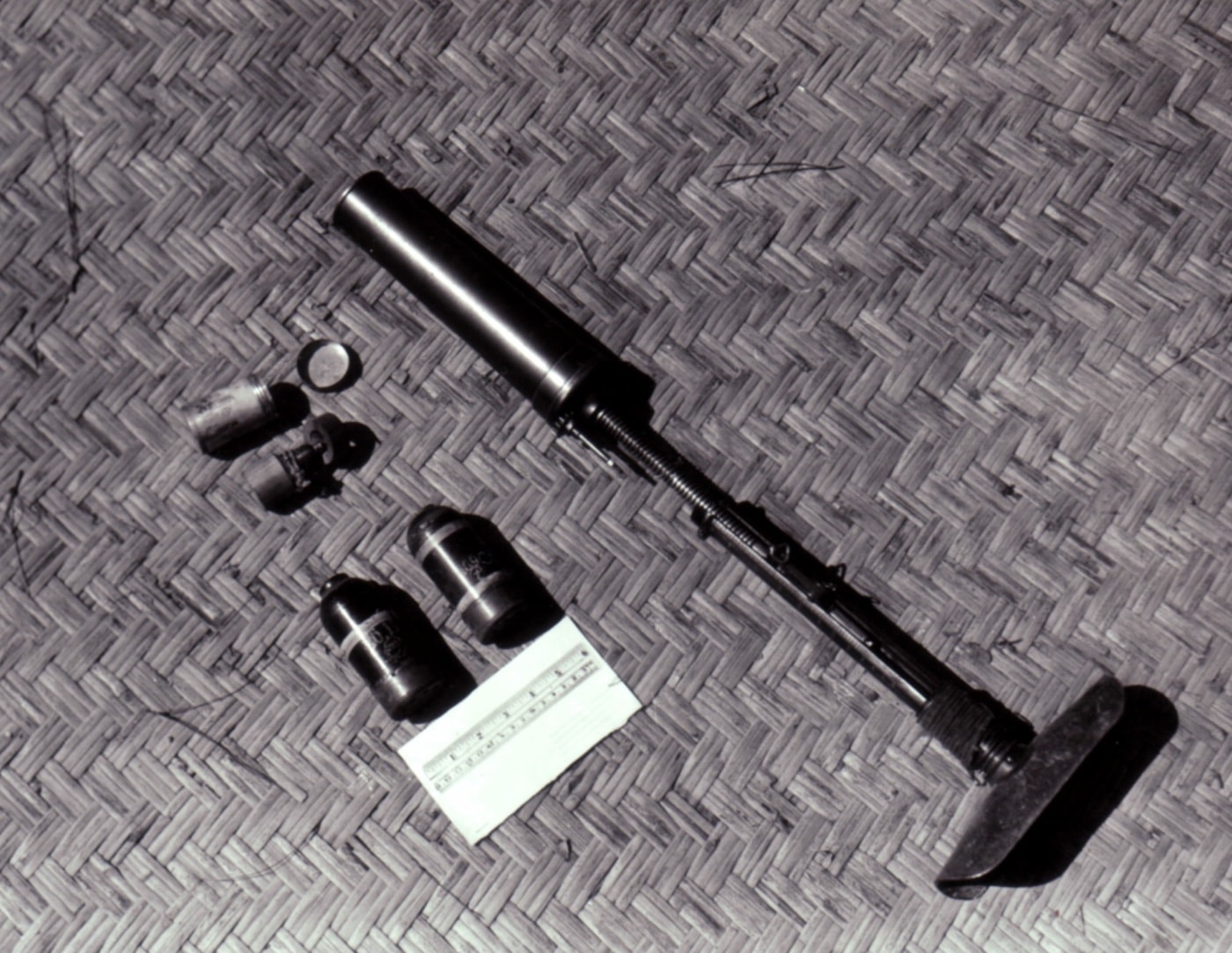
To fire, the gunner selected the range scale for the type of ammunition he was using — either the Model 91 fragmentation grenade or the Model 89 HE shell. Then, the gunner placed the base plate on the ground and pointed the barrel towards the target, using the 6” red or white line painted in a channel along the length of the barrel’s exterior. The safety pin was removed from either the grenade or shell, and the projectile was placed carefully in the muzzle.
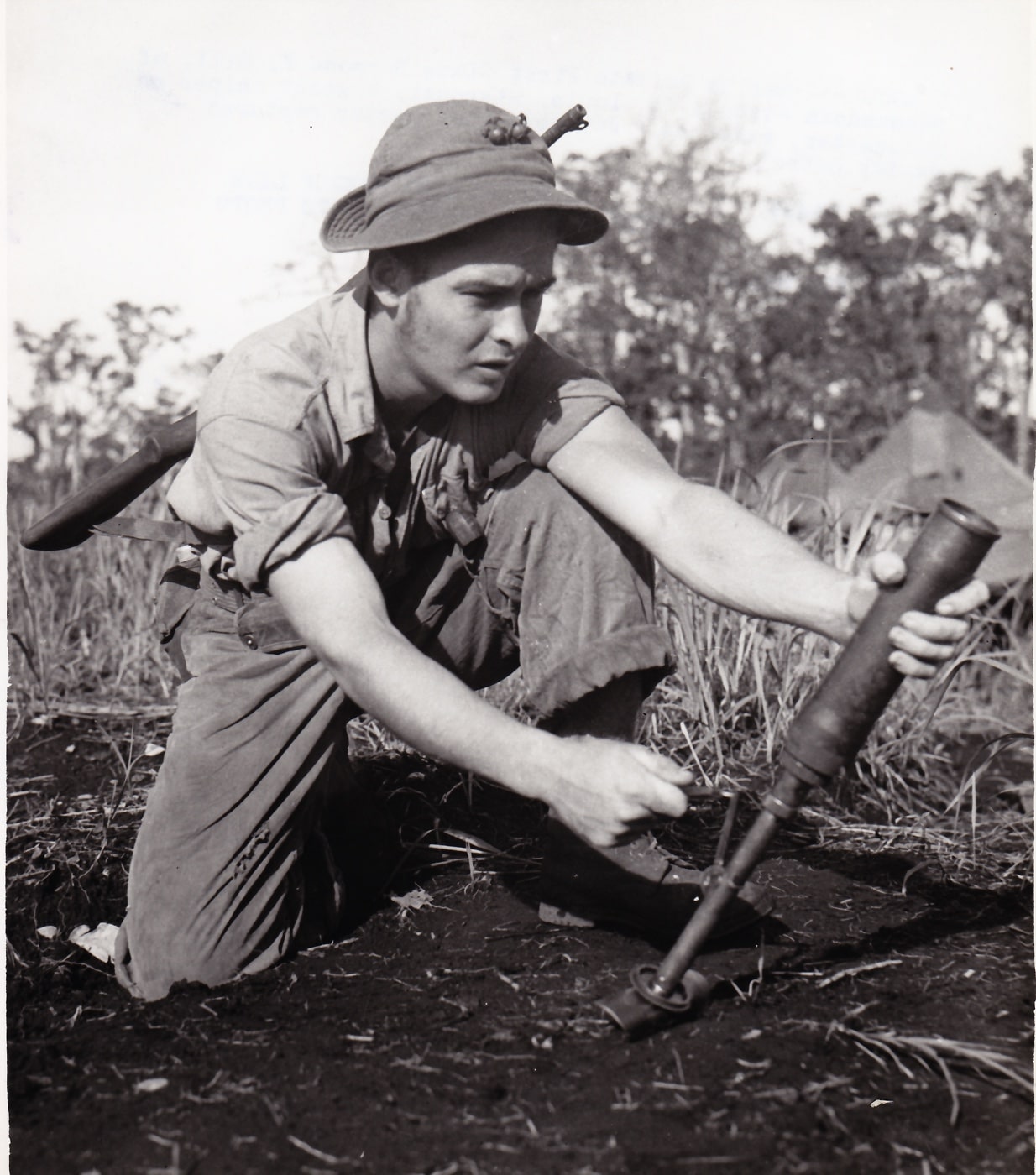
Holding the muzzle of the discharger firmly with one hand, the base plate was pushed into the ground, and bracing the base plate with one foot, the kneeling gunner adjusted the angle of the discharger with the ground to a normal 45 degrees, checked his sighting, pulled the lanyard, and fired the discharger.
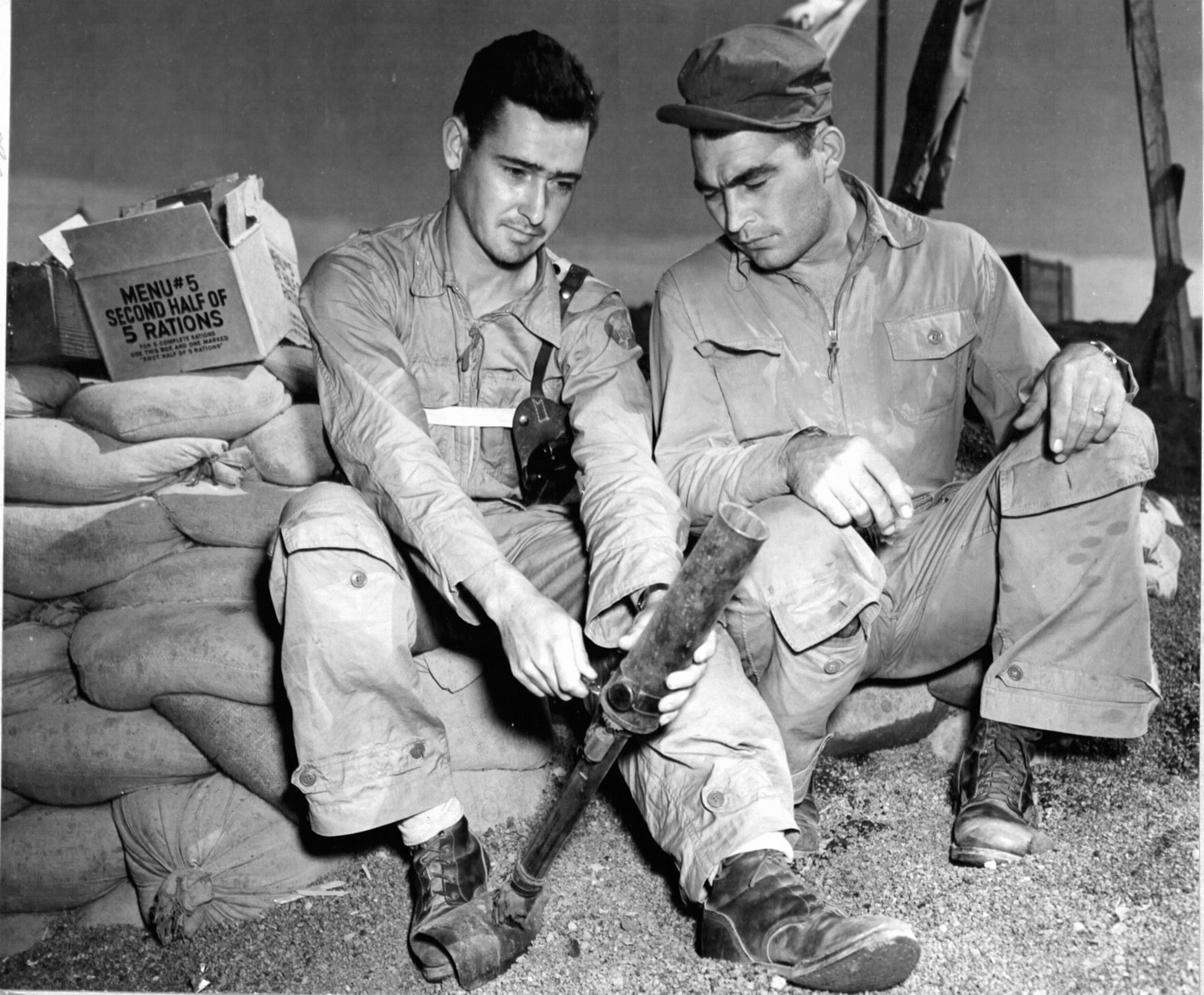
Combat ranges were normally short enough for the gunner to observe the fall of the round and adjust his fire accordingly. Accurate range for the spin-stabilized Model 89 HE shell was from 130 to about 700 yards. When using the Model 91 hand grenade (with a propellant cylinder), range was shortened, from 40 to 200 yards, but accuracy remained good.
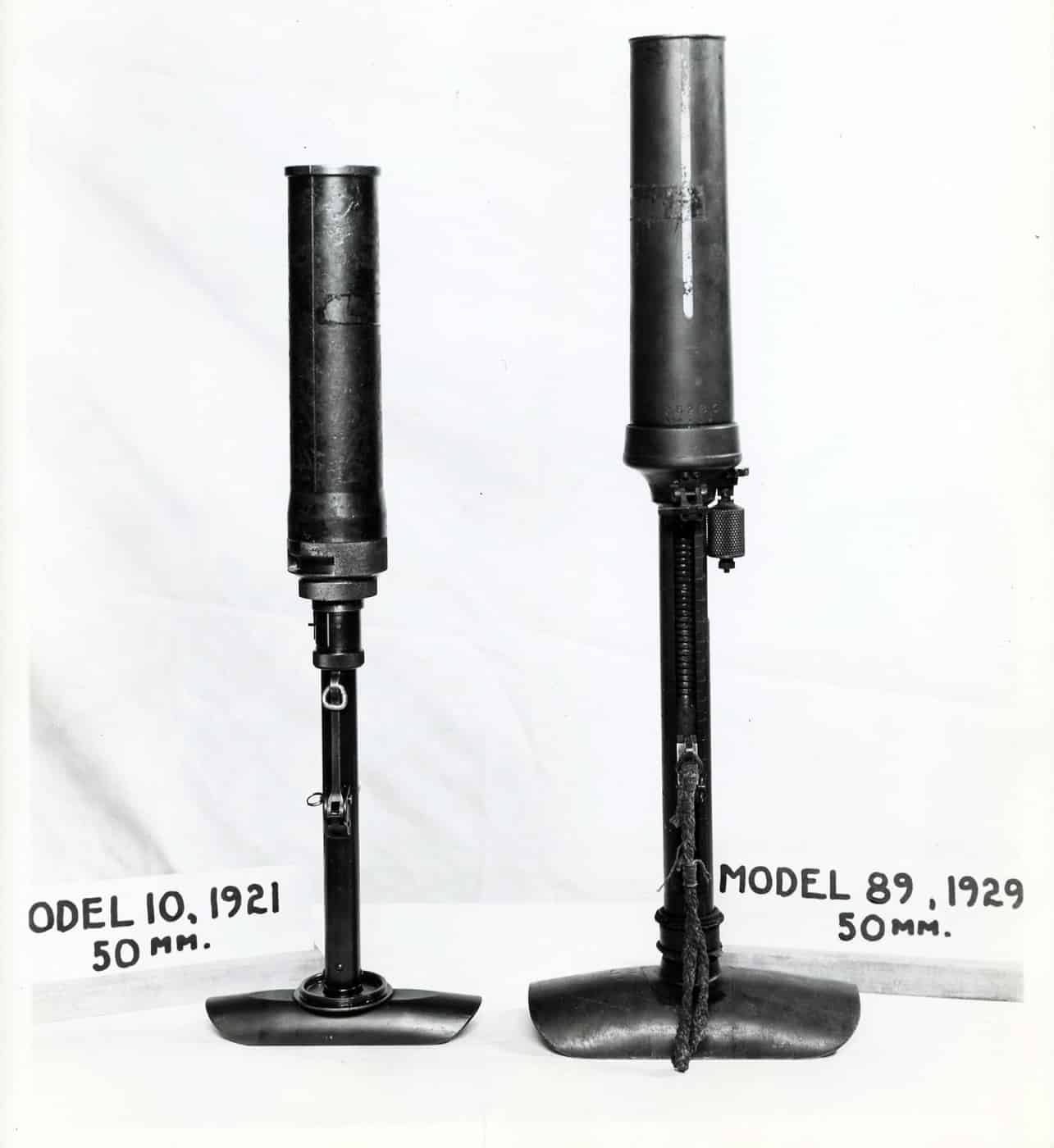
A lesser-known advantage of the Model 89 discharger is that it could be used as a low-angle, direct-fire weapon — angled as low as 15 degrees from the horizontal. In this mode, if the path to the target was clear the Model 89 shell was particularly effective. However, if the target was obscured by foliage, the Model 89’s impact fuse would detonate prematurely. The Model 91 used a seven-second time fuse, and would not be affected by such obstructions. There were multiple types of ammunition for the Type 89, including high explosive, fragmentation, incendiary, smoke, and some signal flares.
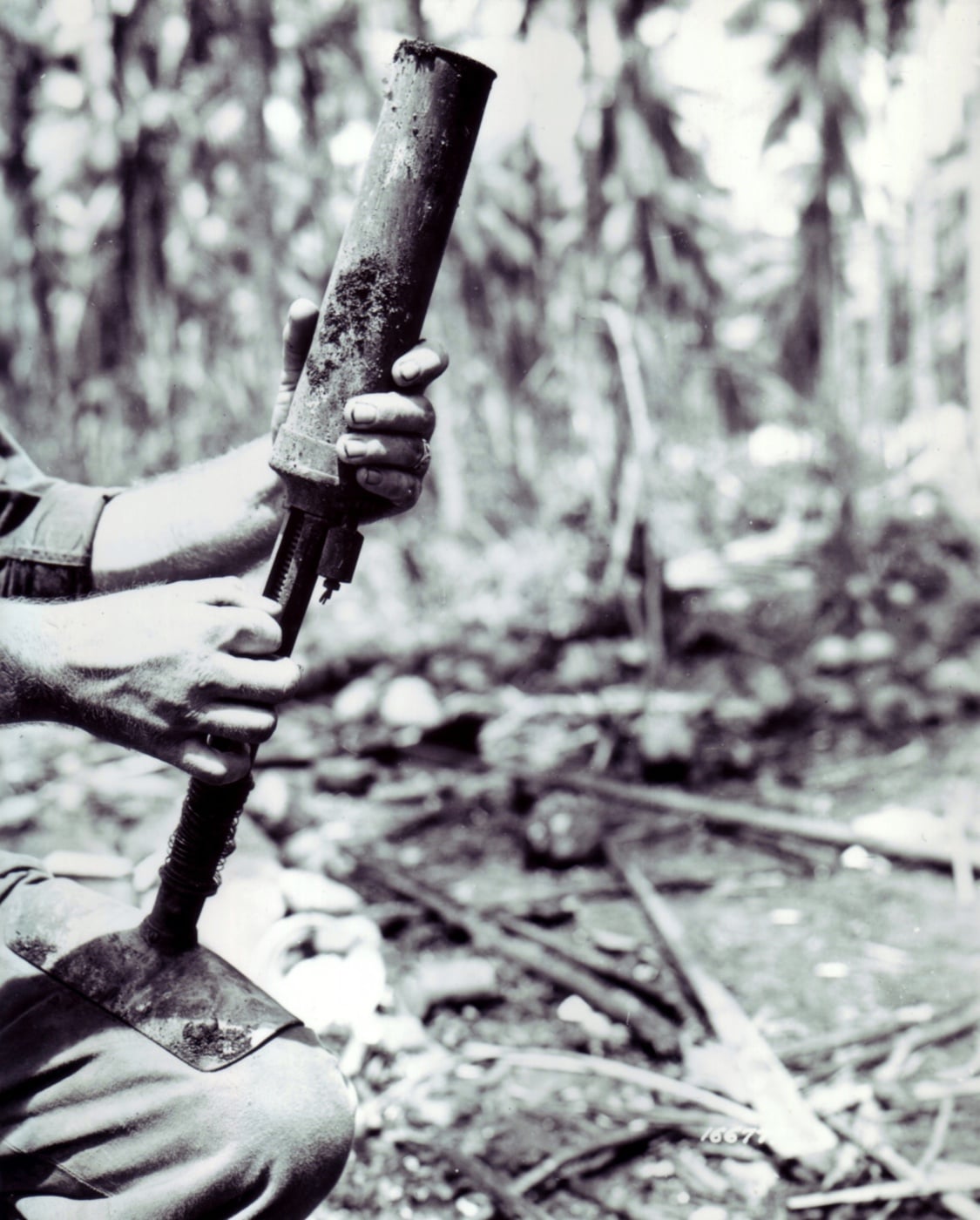
Some Model 89 Grenade Dischargers were equipped with a “bubble” leveling device on their barrels to help the gunner determine the 45-degree firing angle, and these were first encountered by American troops in the battle for Attu in the Aleutian Islands. An important advantage offered by the Japanese grenade discharger was that it was aimed and fired after the projectile had been placed in its barrel. Most mortars used a stationary firing pin at the base of the tube, firing the round as gravity carried the ammunition down the barrel — but also creating the chance of a dangerous “hang fire”.
American Advocates
During jungle fighting the dense overhead foliage often made the use of standard mortars undesirable or even dangerous to friendly troops. In the Solomon Islands campaign, American troops quickly found that the Model 89 grenade discharger gave the Japanese a firepower advantage in close-quarter actions. In fact, several U.S. commanders sought to create an American-equivalent.
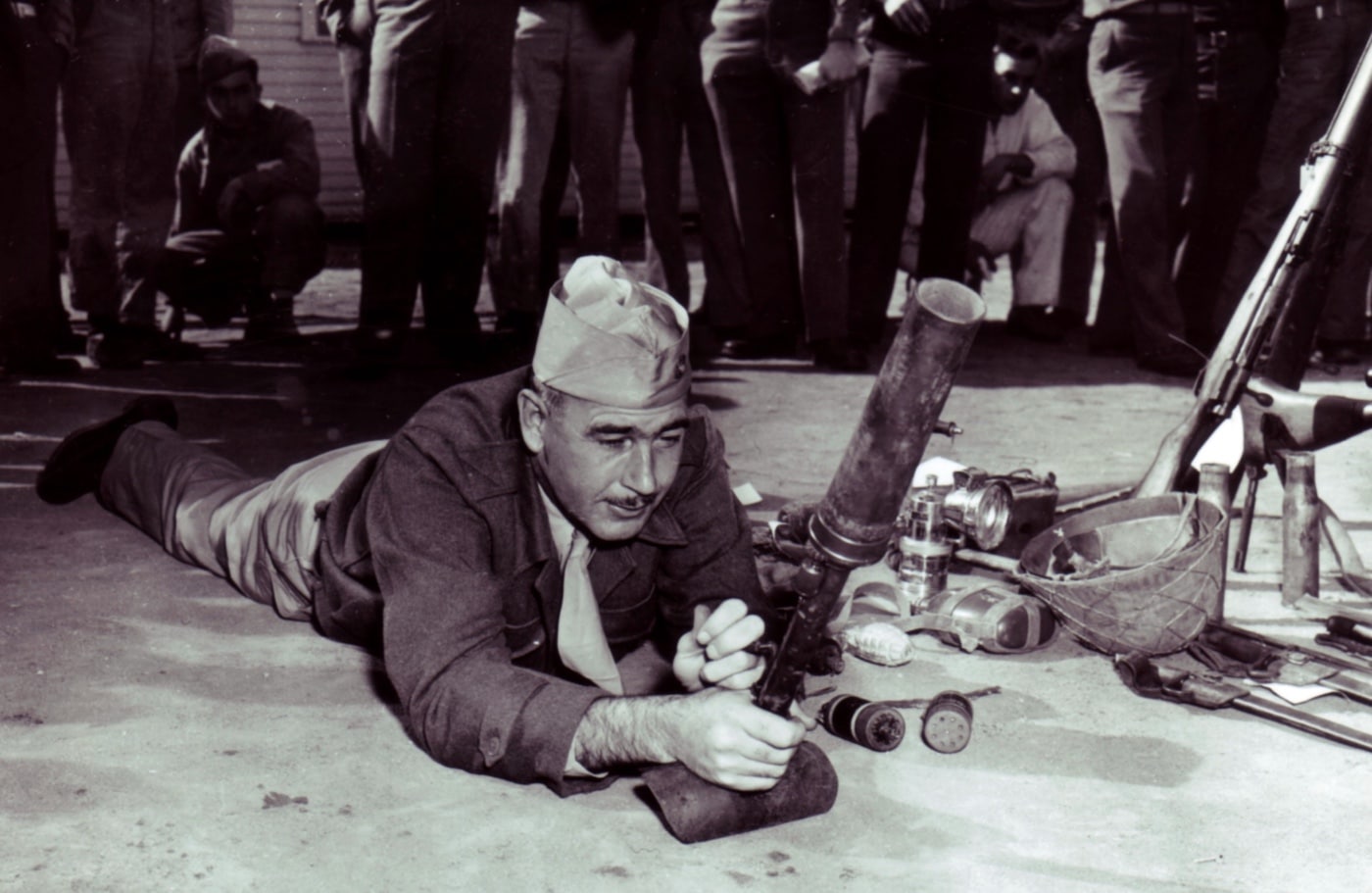
U.S. Army Lt. Colonel John George, who commanded a company on Guadalcanal, and who later fought with Merrill’s Marauders in Burma, commented in his memoir “Shots Fired in Anger”:
“We would make contact; first a few rifle shots would be fired by the scouts and possibly one or two automatic weapons bursts would be exchanged. Then, without delay, we would begin to hear the blasts of those damn knee-mortars — grenade explosions, on the trail behind or amongst us. It was annoying as hell.
We tried to counter it, of course, using materials at hand. We had to do something to enable our platoons to fire back at the knee-mortars. Several methods were tried and all of them gave some measure of success but, in the long run, none were practical or economical as would have been the adoption of an American knee-mortar with matched grenades.”
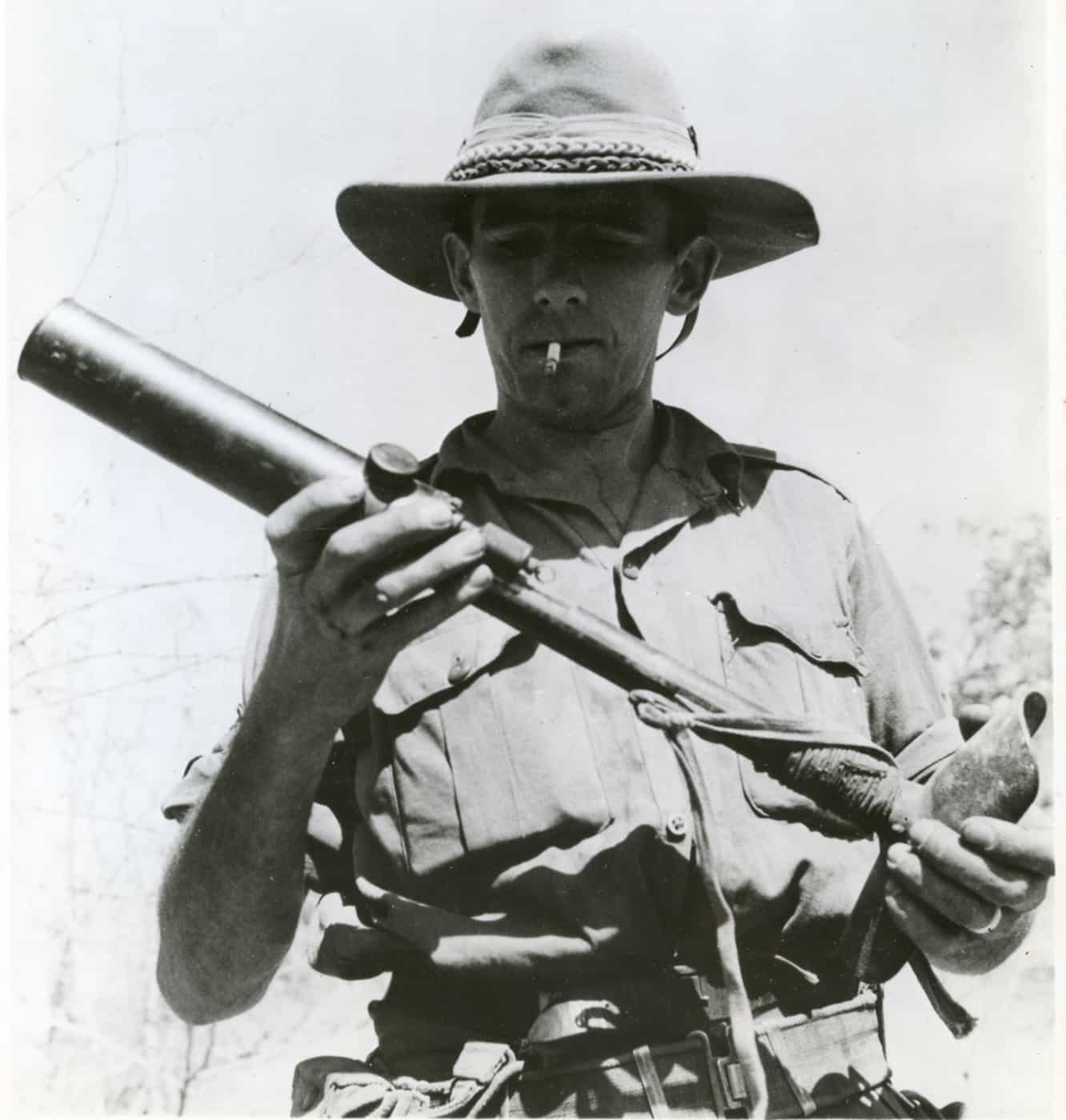
Colonel Merritt Edson, initially commander of the 1st Marine Raider Battalion, and later the commander of the 5th Marine Regiment, had considerable experience fighting Japanese troops in the Solomon Islands. He had this to say about the Type 89 Grenade Discharger in his 1943 report on the fighting on Guadalcanal:
“We need the knee mortar badly. The following are reasons in its favor:
- It is a one-man load.
- A man can carry ten rounds on his person besides his weapon.
- It has a high rate of fire.
- It gives to the Platoon Commander a weapon of this type which is immediately available to him.
- This mortar uses the Jap all-purpose hand grenade, with ranges 50 to 65 yards. I believe the Japs have three (3) of these mortars in a Mortar Squad in each Rifle Platoon. They have two ammunition carriers per mortar.
- It can be lowered to a low angle and placed against a log and shot straight out further than a hand grenade.
I would recommend one change in the projectile. The Japs have too much high explosive in the projectile and the case is too thin. We get a lot of casualties from it, but they are minor wounds.”
Colonel Edson and many other proponents of a “knee mortar” design for the U.S. troops were not to get their wish. Instead, U.S. Army Ordnance was soon to provide the M1 2.36 Rocket Launcher, the Bazooka. In 1944, the greatly improved M2 Flamethrower became available. These weapons combined to give American troops a firepower advantage, particularly as the fighting began to move to islands closer to the Japanese homeland.
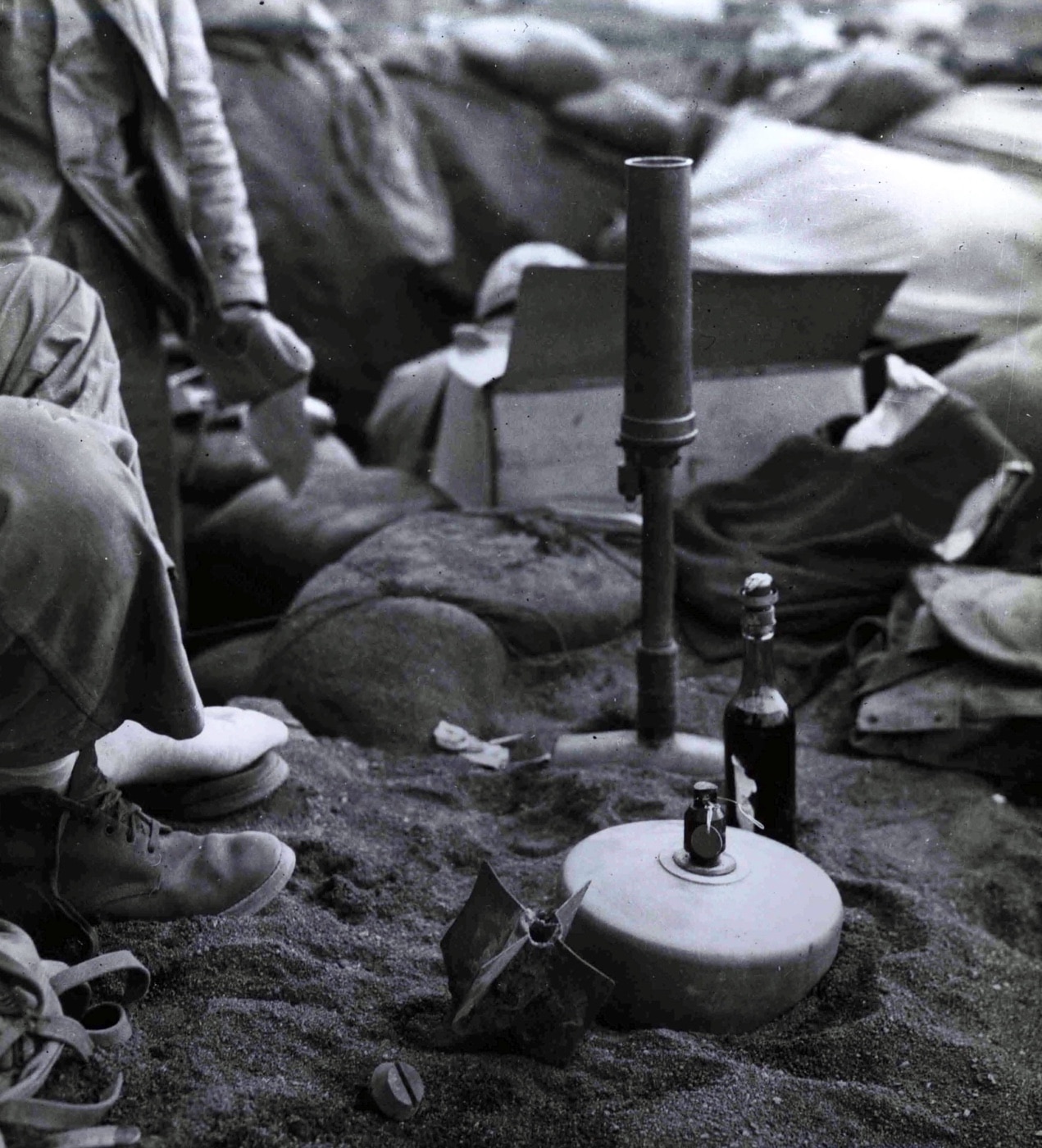
Even so, I wonder if Edson’s thoughts about the Type 89 Grenade Discharger may have lingered in the minds of U.S. Ordnance men. When I originally proposed this article, The Armory Life editors immediately thought of America’s post-WWII development of the simple but highly effective M79 Grenade Launcher.
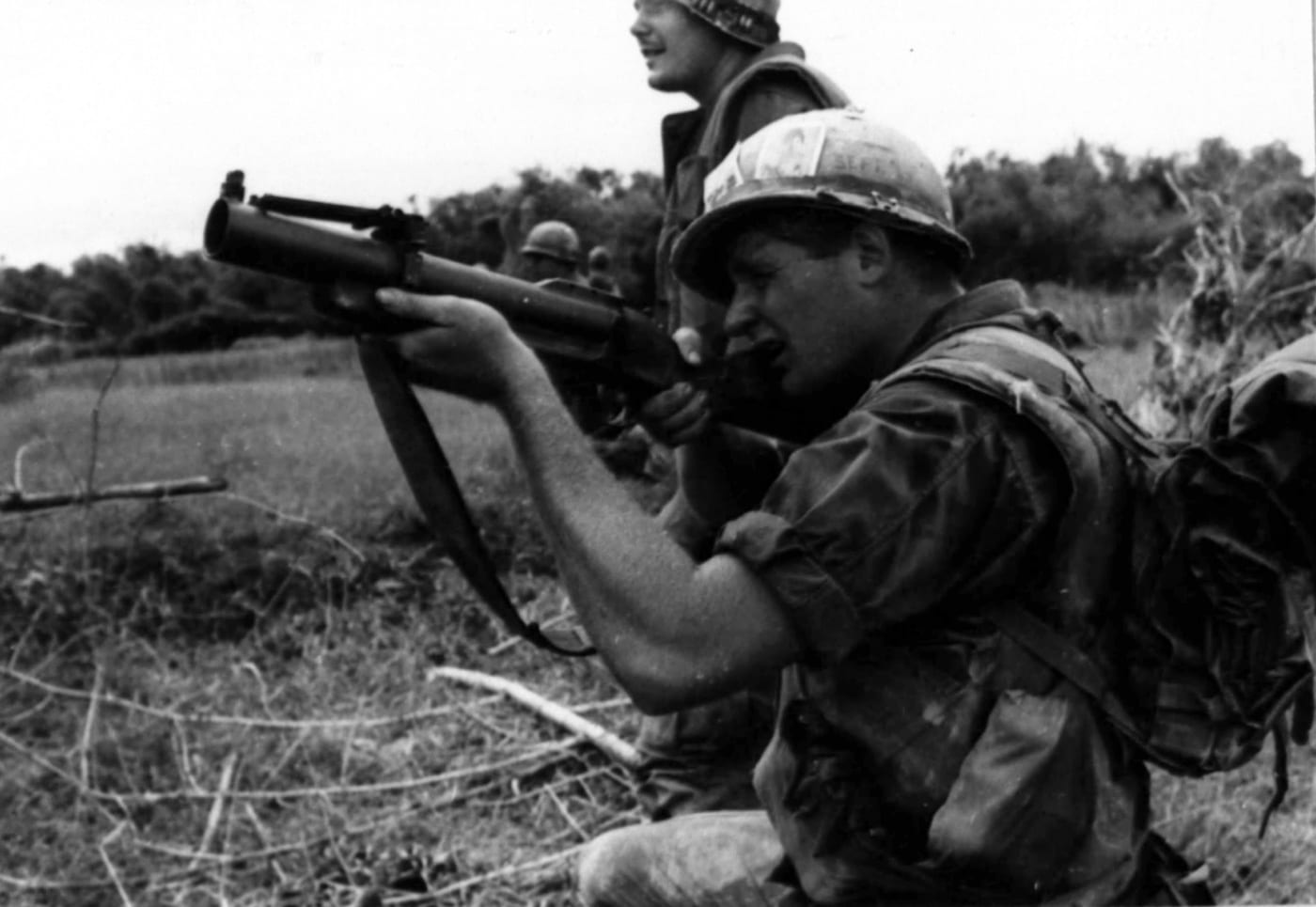
Perhaps the U.S. Army’s “Project Niblick” in 1961 harkened back to 1943 — as the U.S. military sought to increase infantry firepower with a weapon more portable than a mortar but with greater range and accuracy than rifle grenades. Ultimately, the 40mm M79 Grenade Launcher gave American troops the ability to cover the important intermediate range, between the range of hand grenades and the long reach of artillery.
Editor’s Note: Be sure to check out The Armory Life Forum, where you can comment about our daily articles, as well as just talk guns and gear. Click the “Go To Forum Thread” link below to jump in!
Join the Discussion
Continue Reading
Did you enjoy this article?

 84
84






